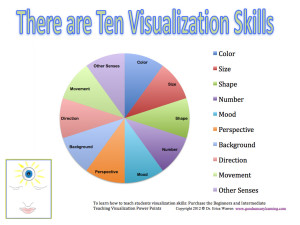Mindfulness: Imagery and Visualization

Mindfulness, Imagery/ Visualization There is a fine line between using imagery/visualization to become more present and becoming less present. There is the kind of visualization an athlete would do to enhance their skills or for that matter anyone looking to develop specific skills in their line of interest. I’m not talking about that kind. Another kind is to using it for relaxation and to reduce stress by pretending to be somewhere else or someone/something else. It’s an effective way to disconnect. It works in the short run because we can trick ourselves into stimulating the relaxation response but there is always a rebound effect in that the unwanted stress inevitably returns and sometimes is more intense. It is being shown more and more that attending to the present moment by fully experiencing pleasant, unpleasant and neutral experiences is the most effective approach although it may not seem that way in the short run. So we can see that intention plays the pivotal role. Imagery/visualization can be used in mindfulness as a way to bolster qualities associated with the present moment experience such as patience, trust, accepting, letting go, non judging, non striving, beginners mind and so forth. It can be done by choosing images that evoke those qualities. We identify with those images and then let identification with those images bring forth the qualities in common with mindfulness. It may take some practice but it is worth the time. It is a nice adjunct to the “main” practice of mindfulness and is somewhat analogous to the way a loving-kindness practice develops compassion, appreciation, gratitude and other similar qualities. An example of this is the use of the image of a mountain. We use this in the MBSR classes and it is very effective. Before doing the meditation the class prepares by doing a quick informal connection to their experience of a mountain. We look at what that image suggests and how it makes us feel. Some of the more common responses are stillness, strength, stability, beauty, connected, expansive, solid, adventure, natural, perfect, fun and peaceful. In evoking those kinds of experiences it connects us to those present moment qualities and complements the core meditation practice. We then build the visualization meditation around these qualities using all our senses and imagination to bring it to life. It gives us a different approach to experiencing those present moment qualities. It could be argued that the core mindfulness meditation practice will do the same thing and for some people that is all they need. For others, this kind of additional practice is a helpful and welcome boost.
Mindfulness: Imagery and Visualization Read More »
